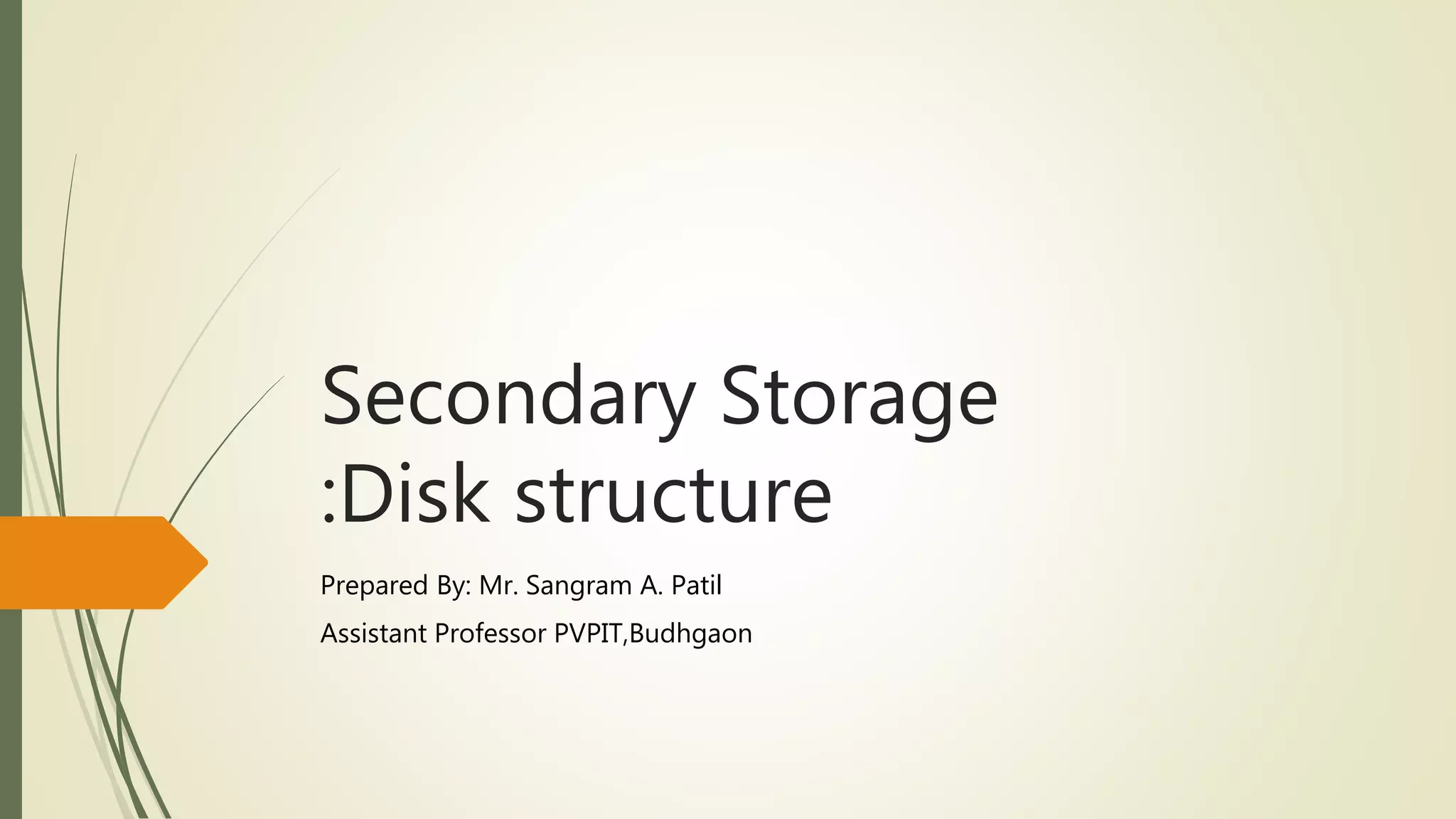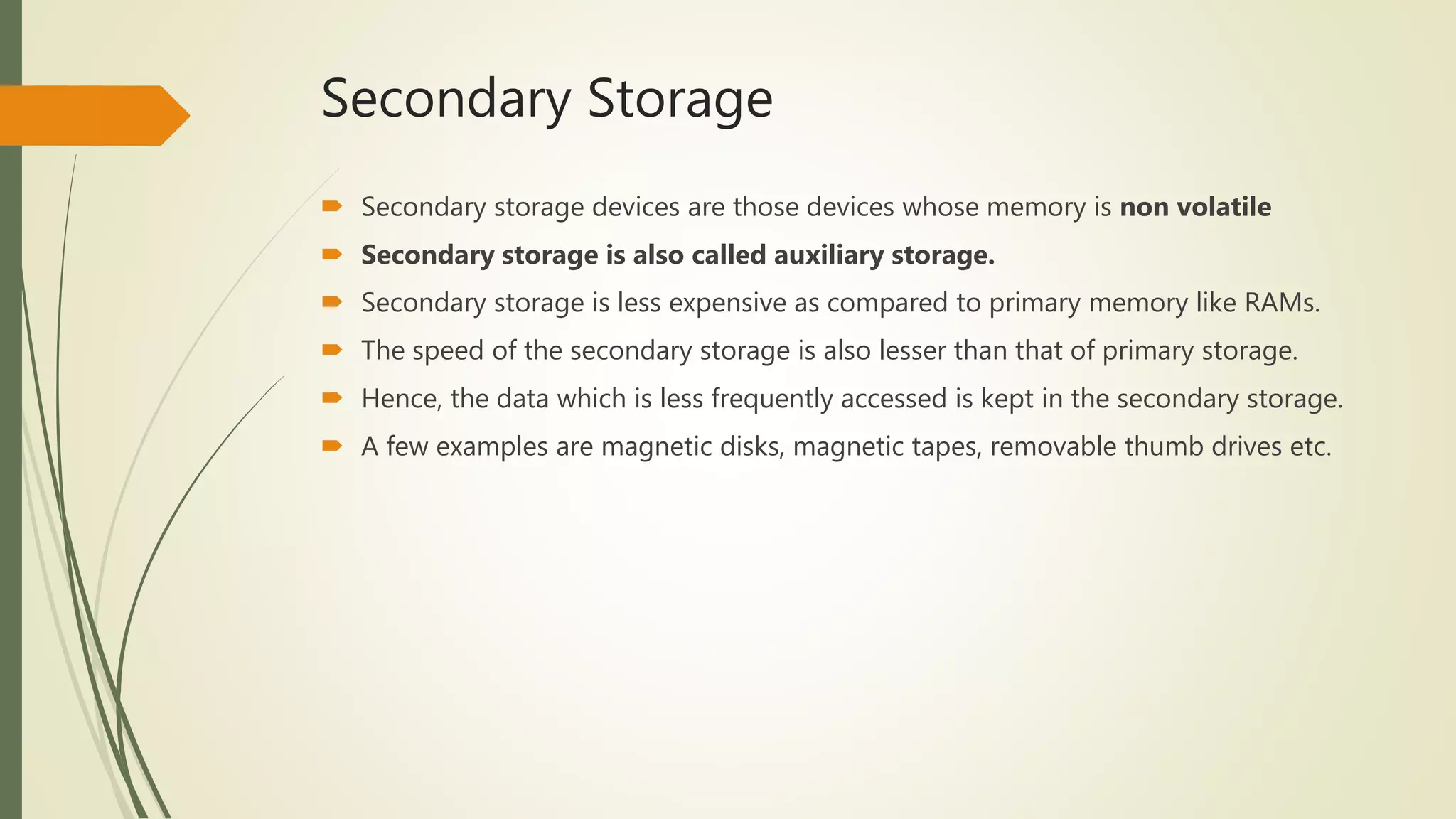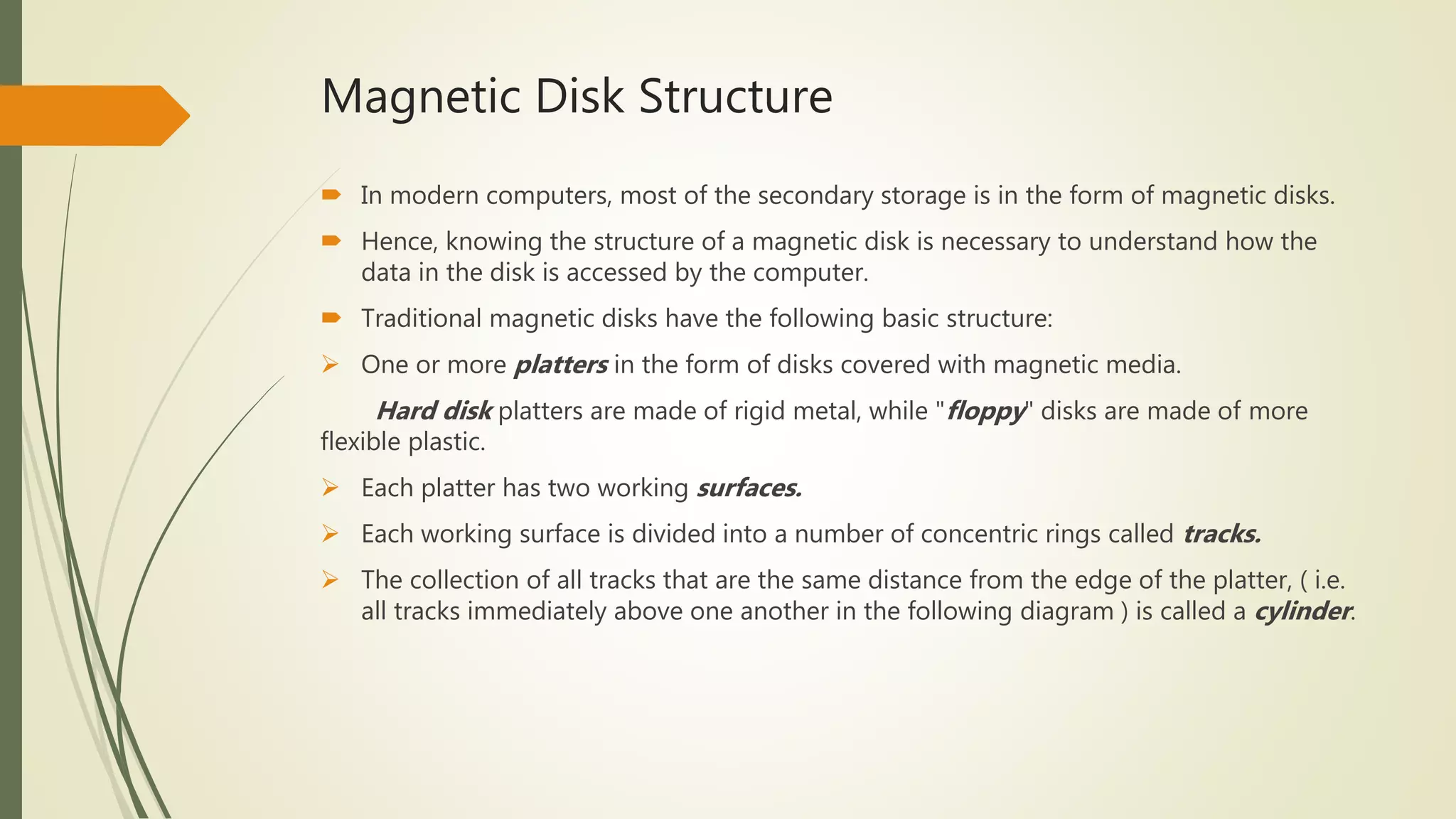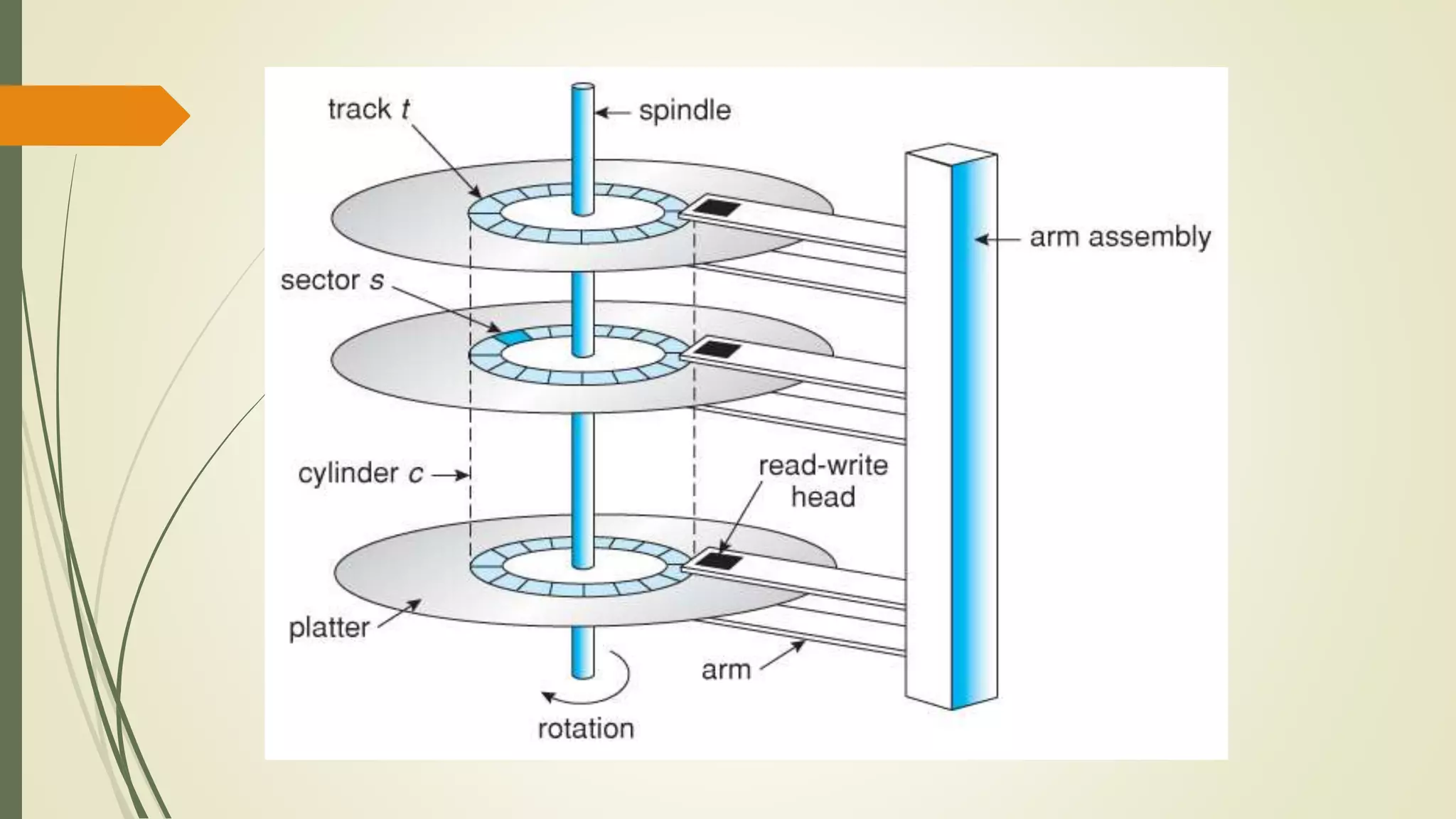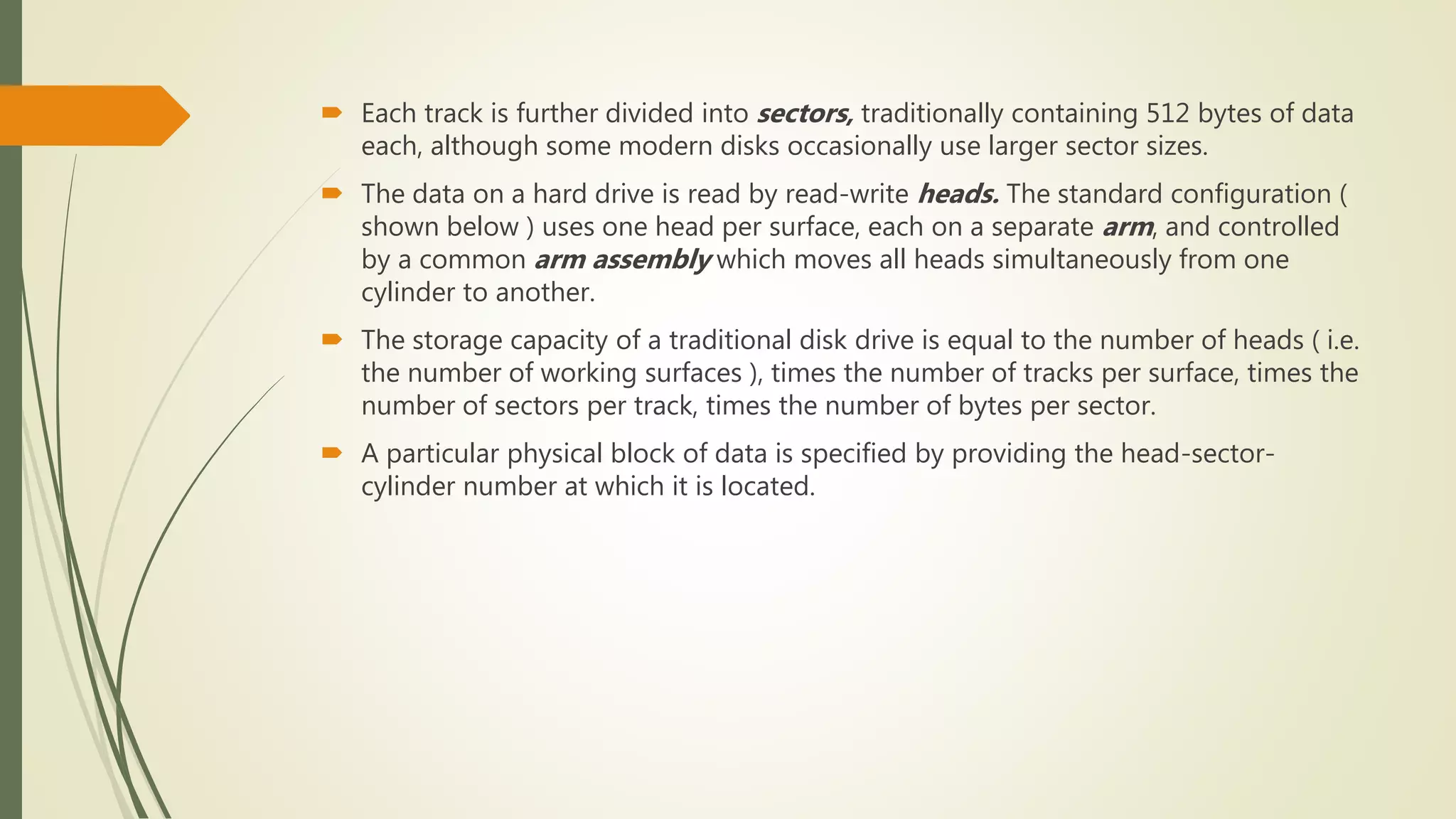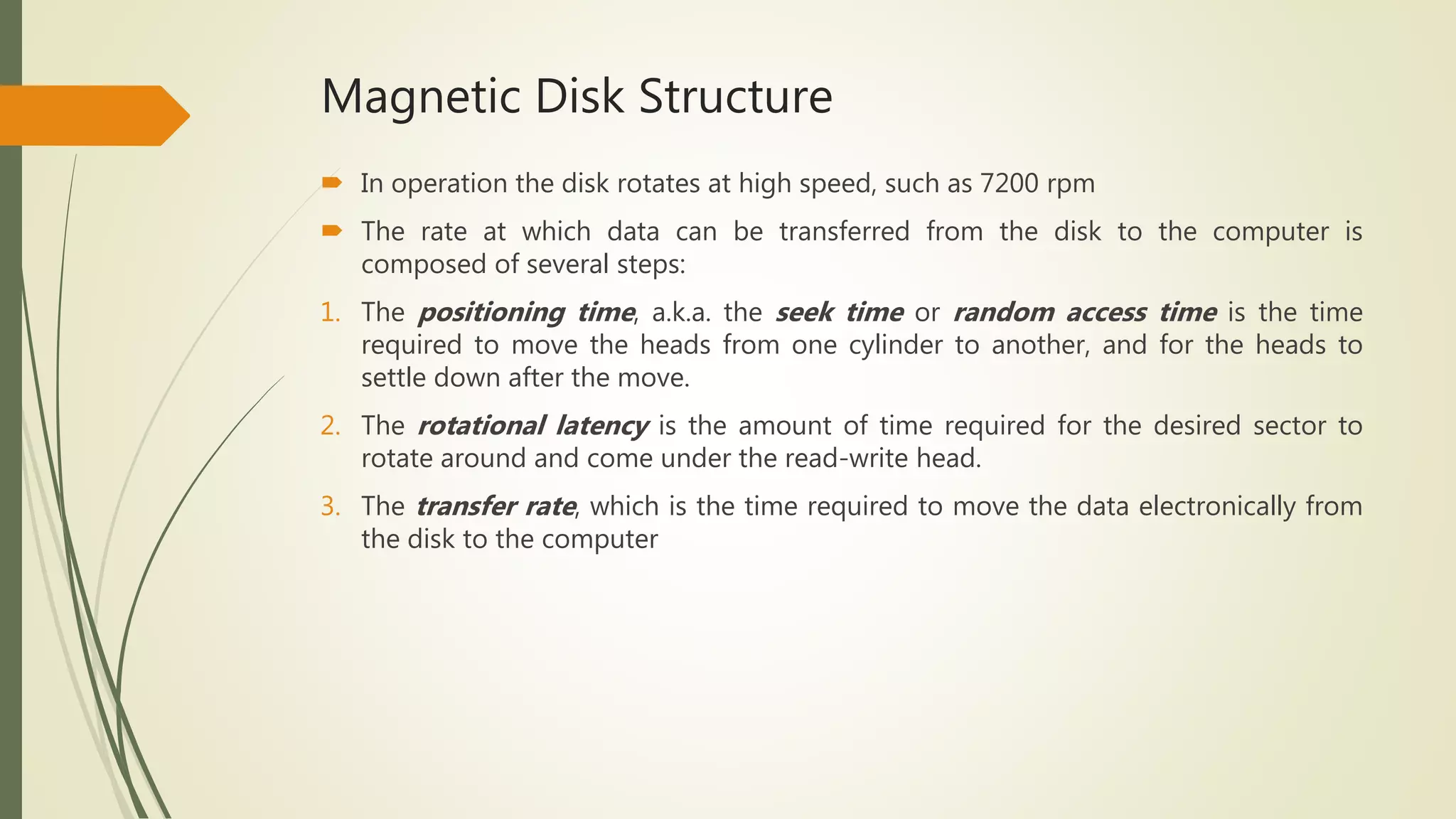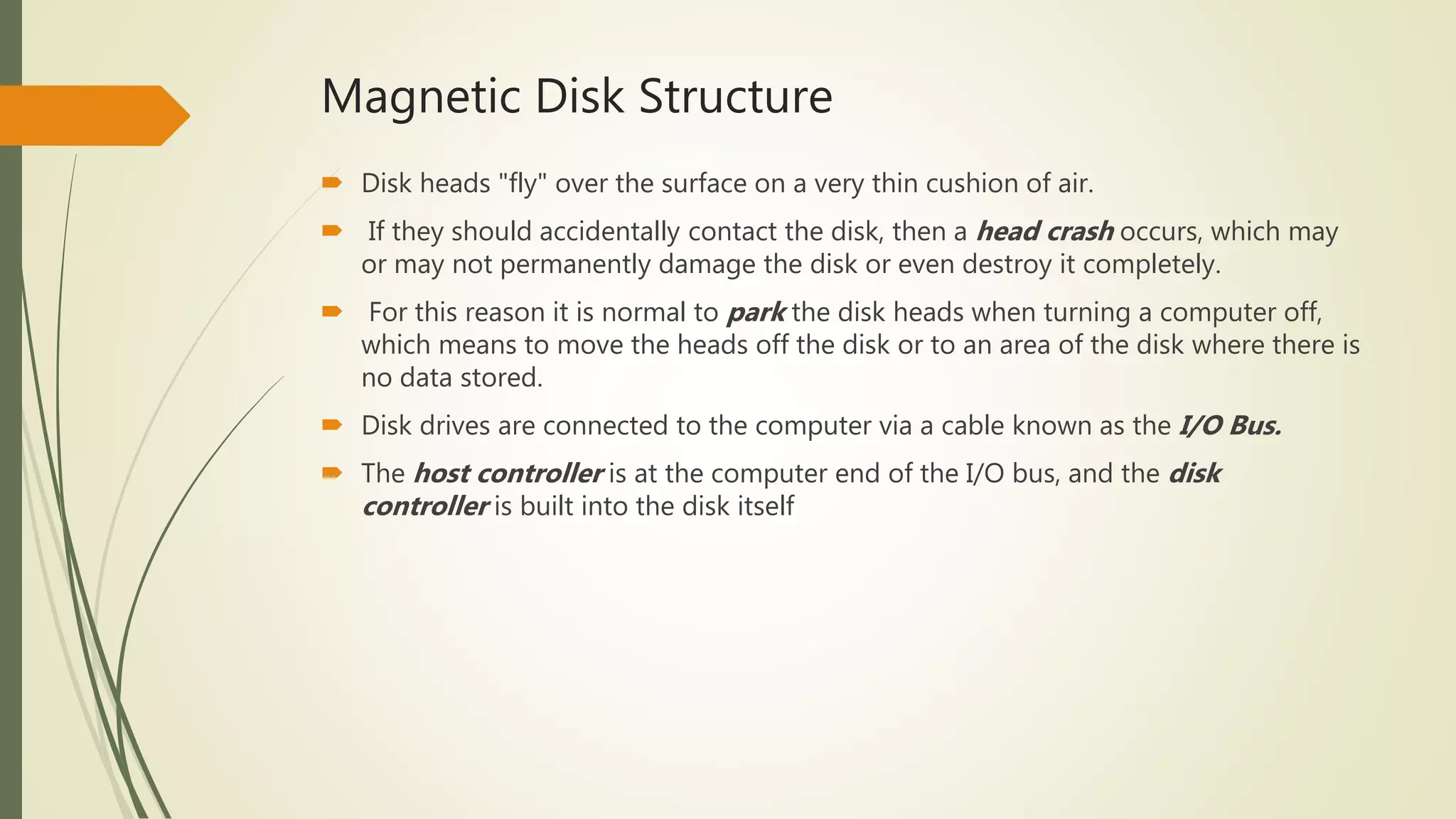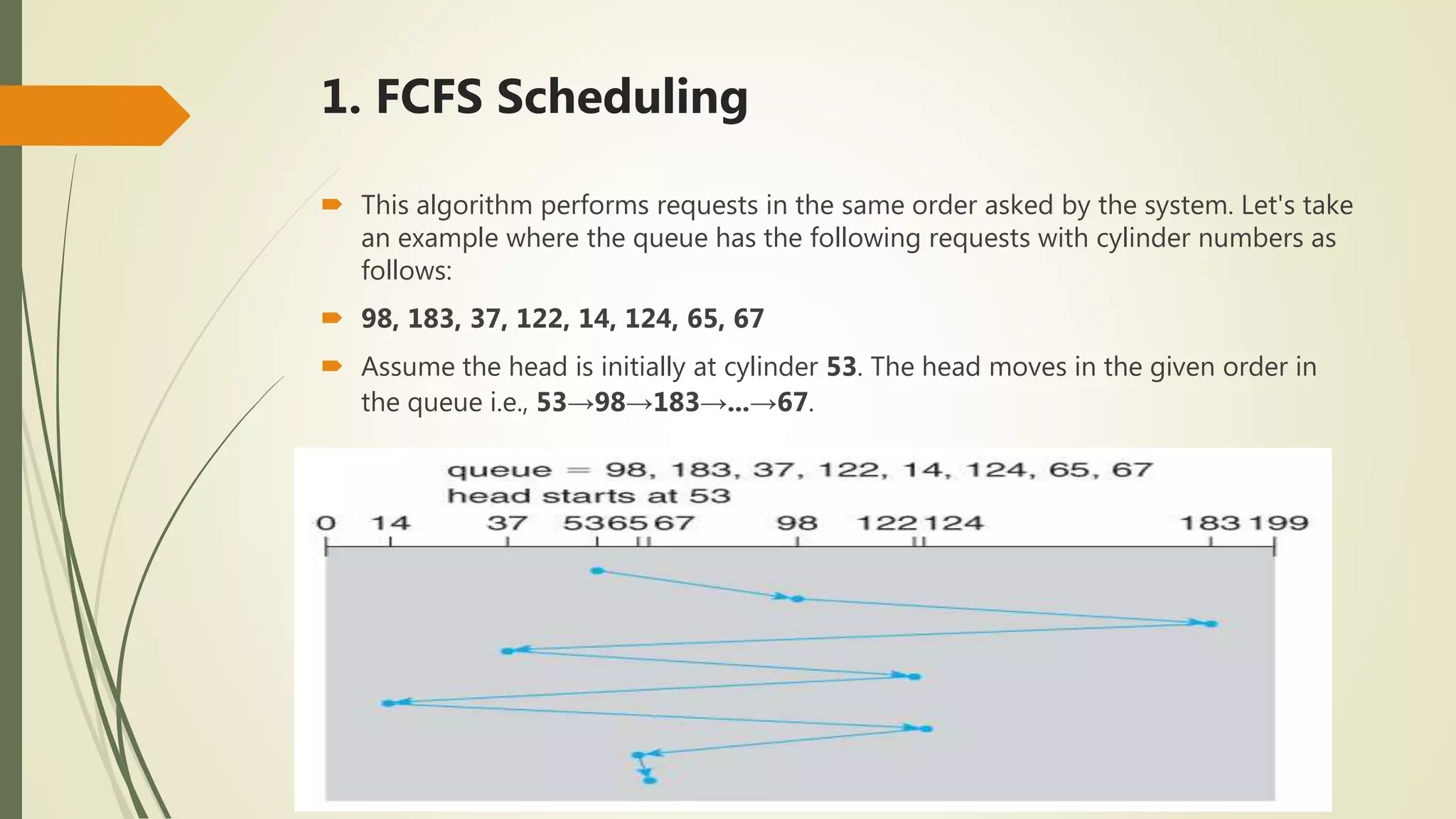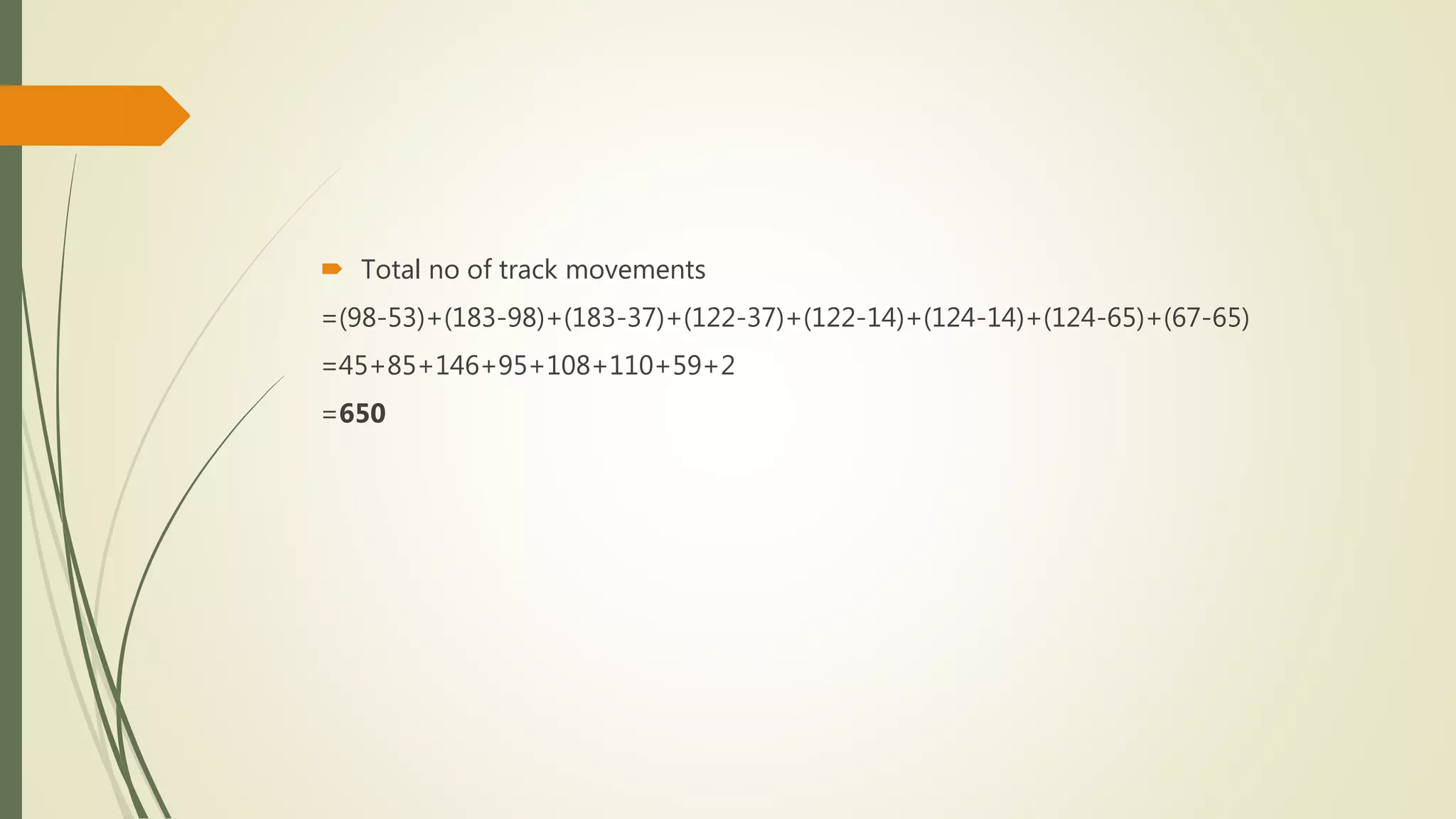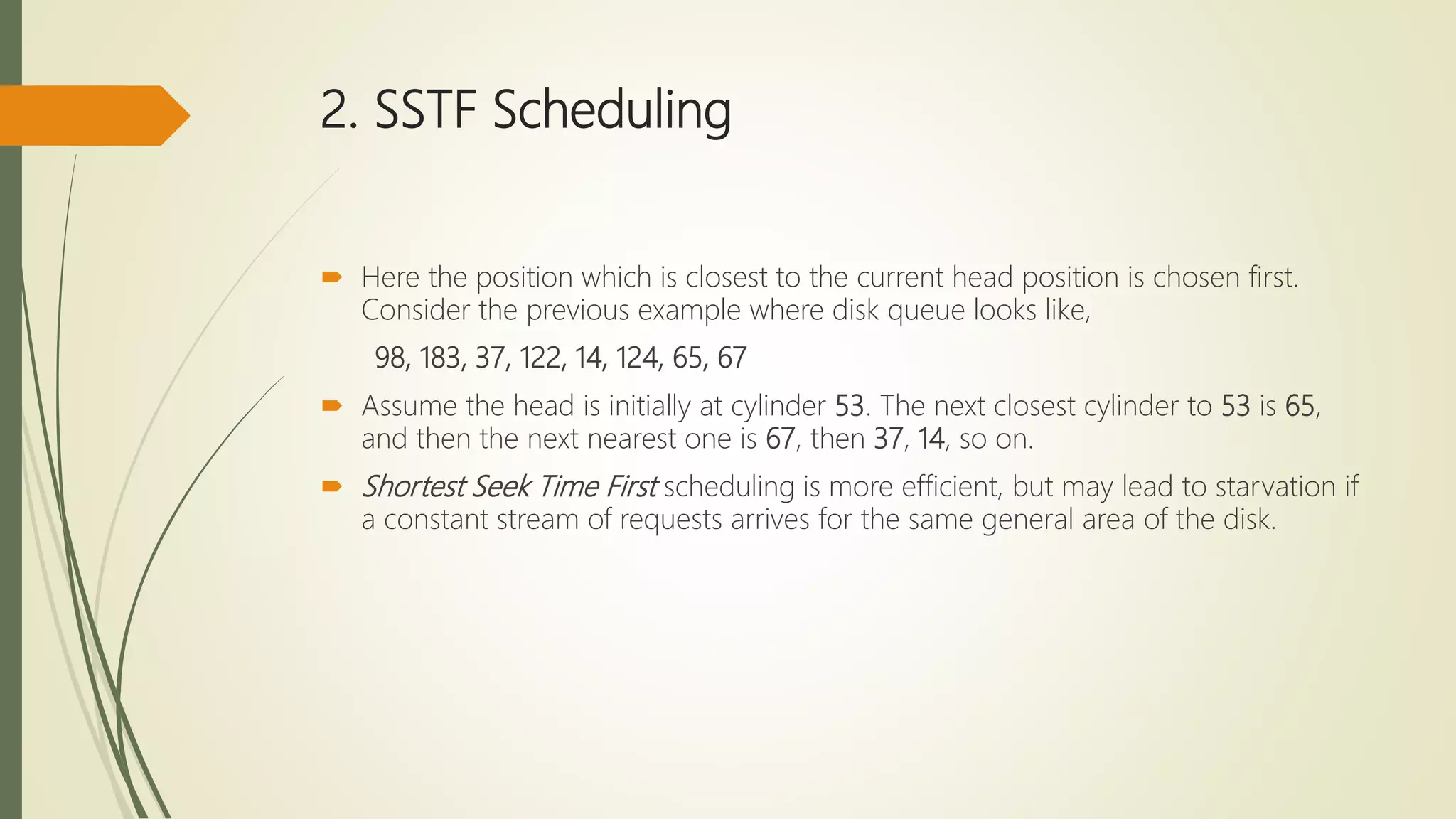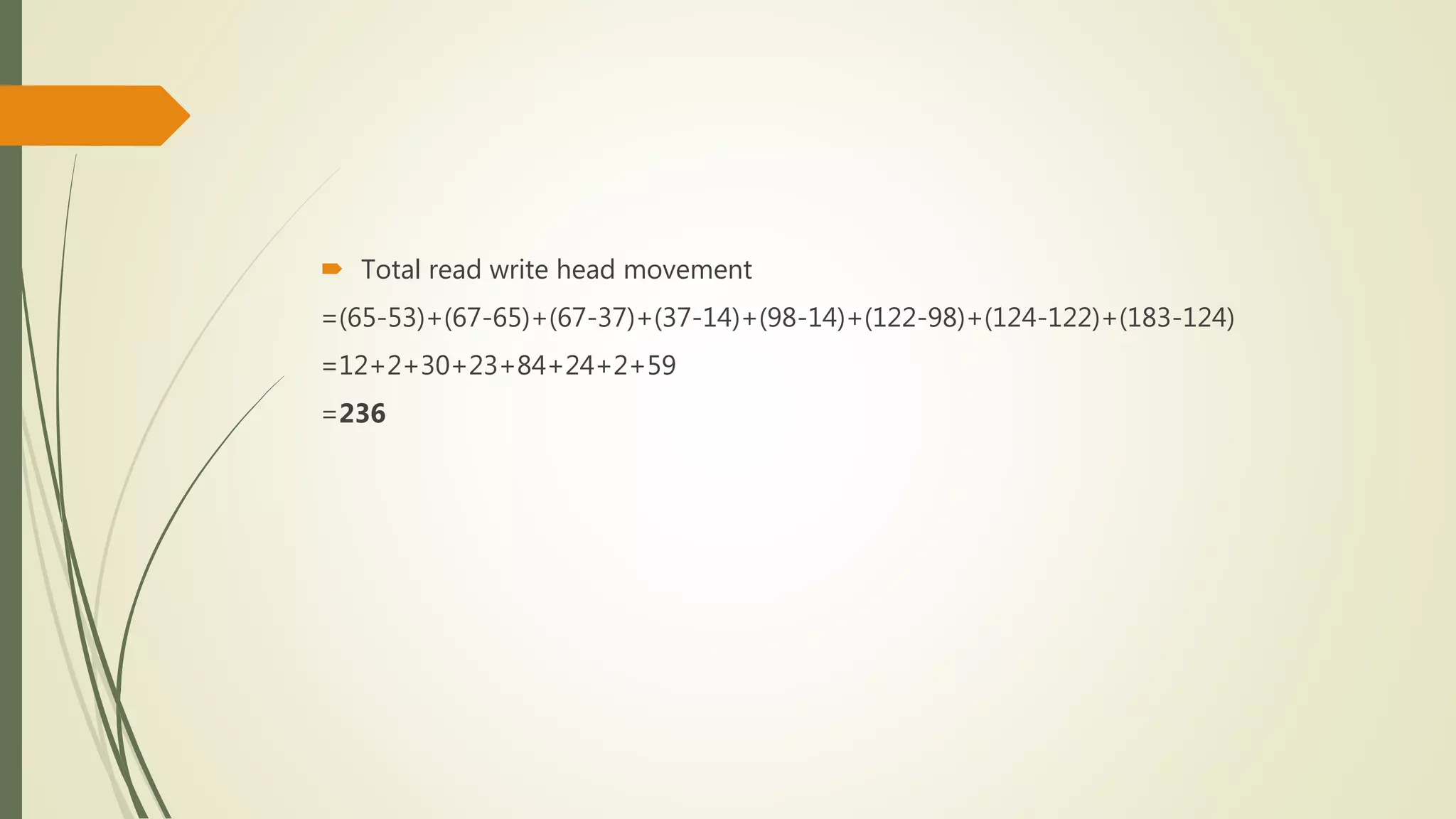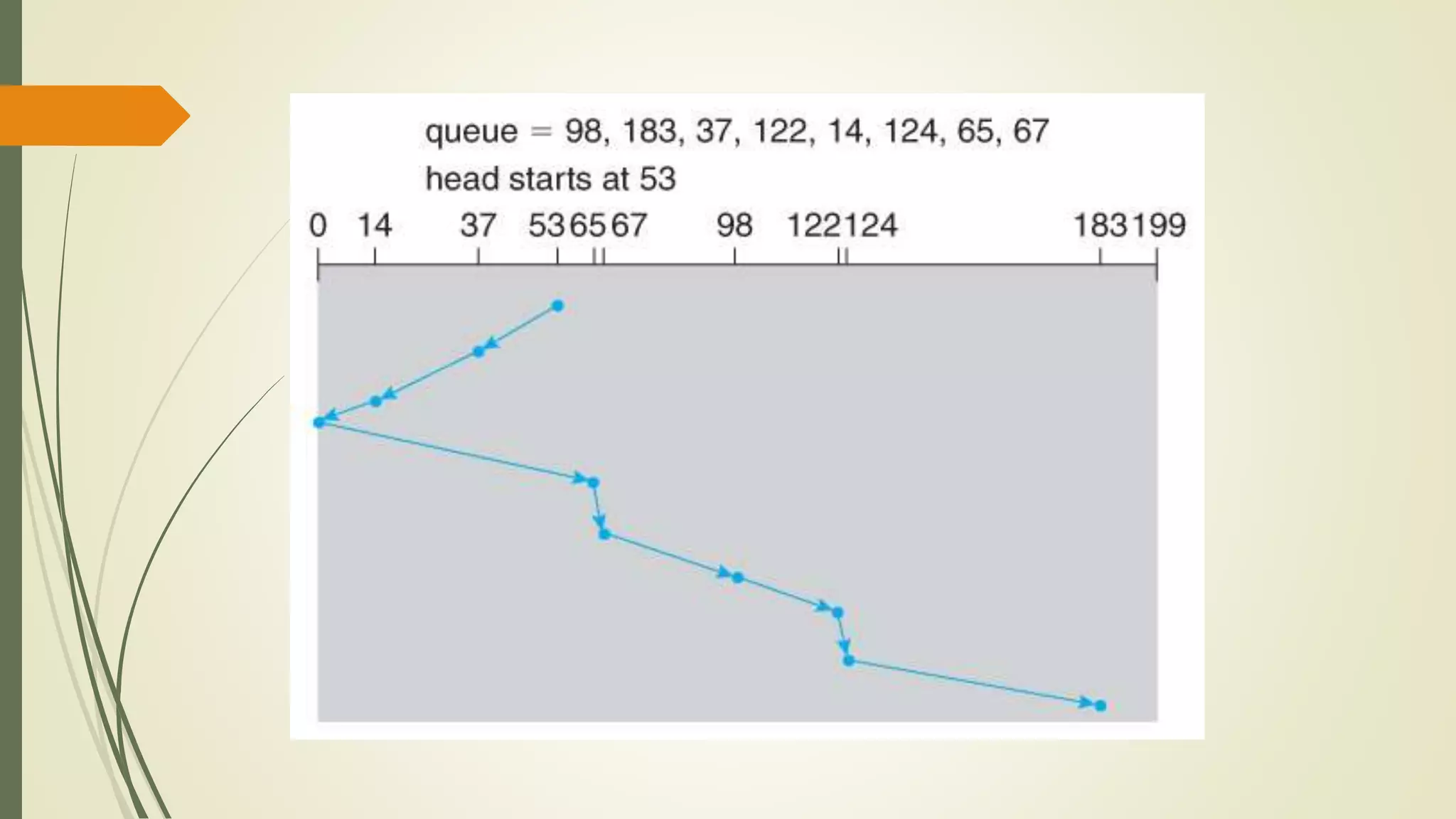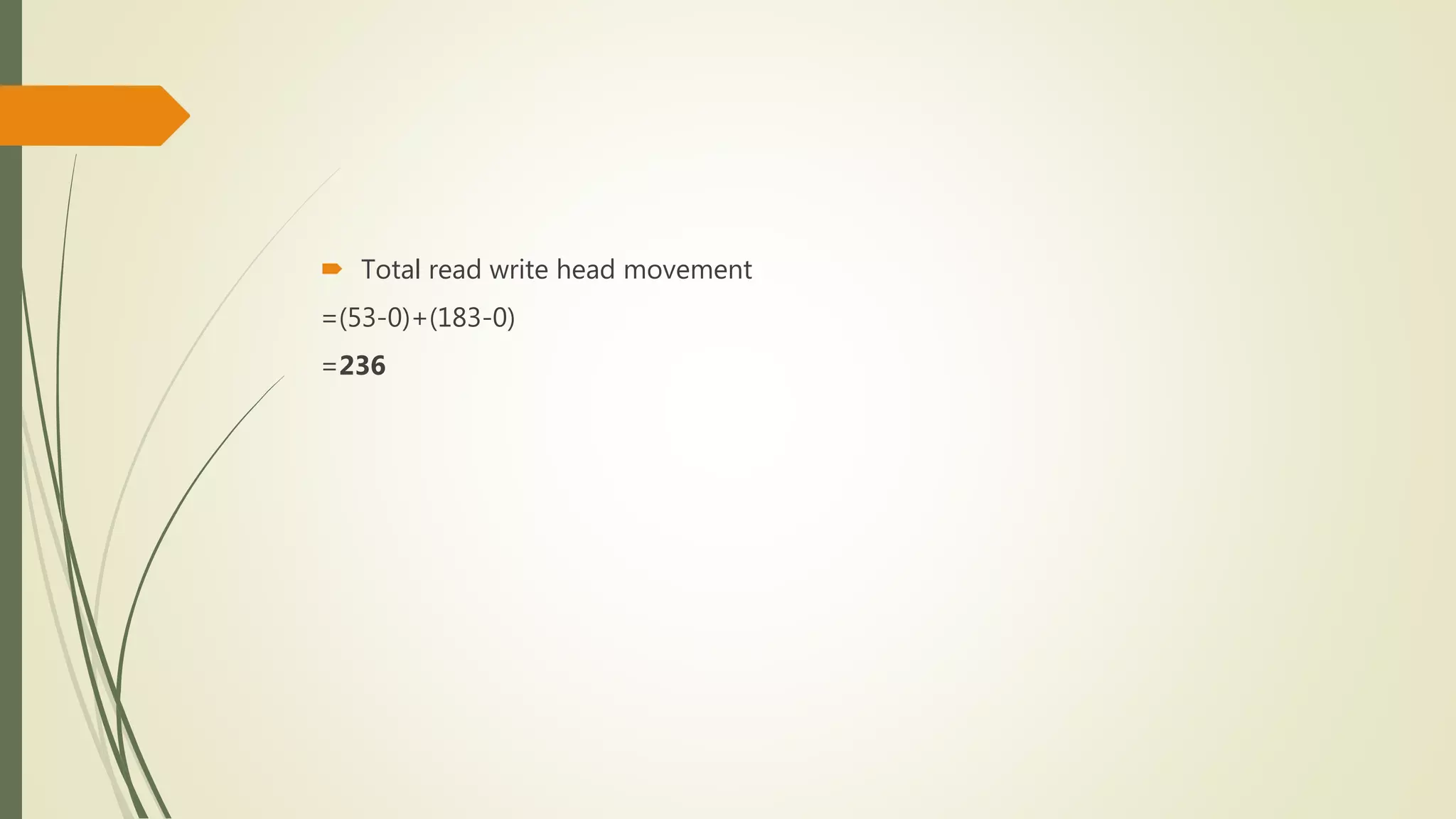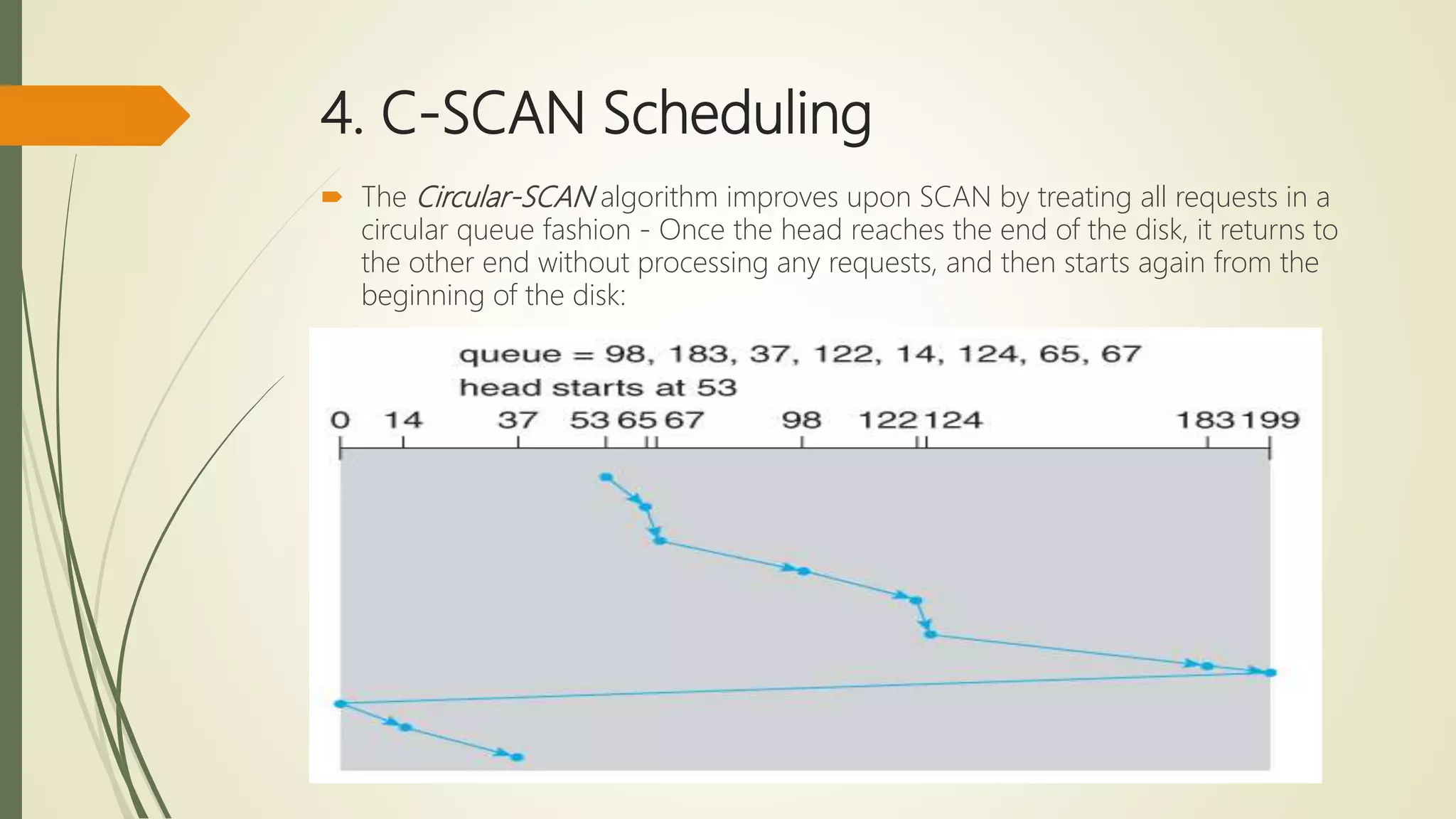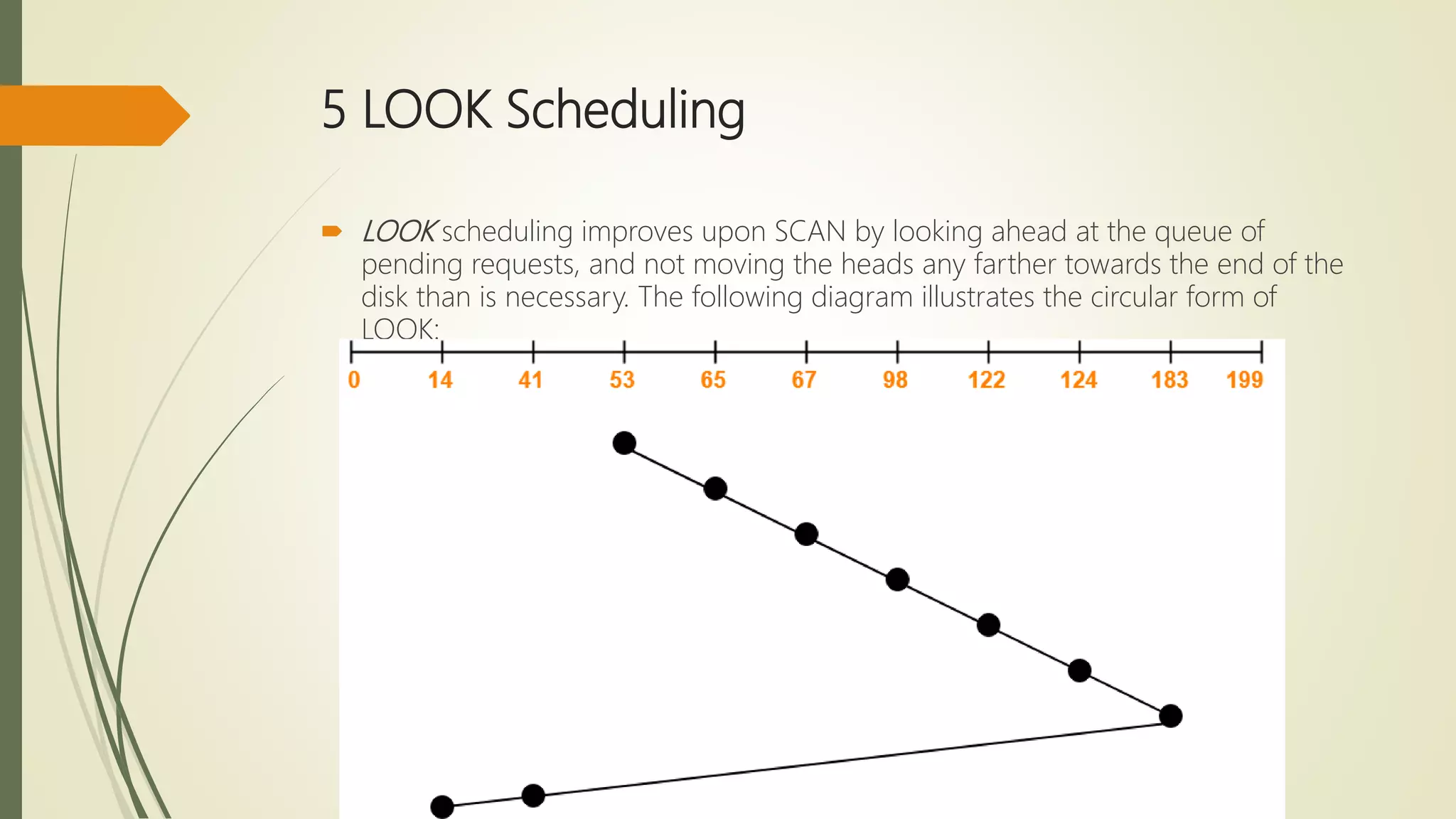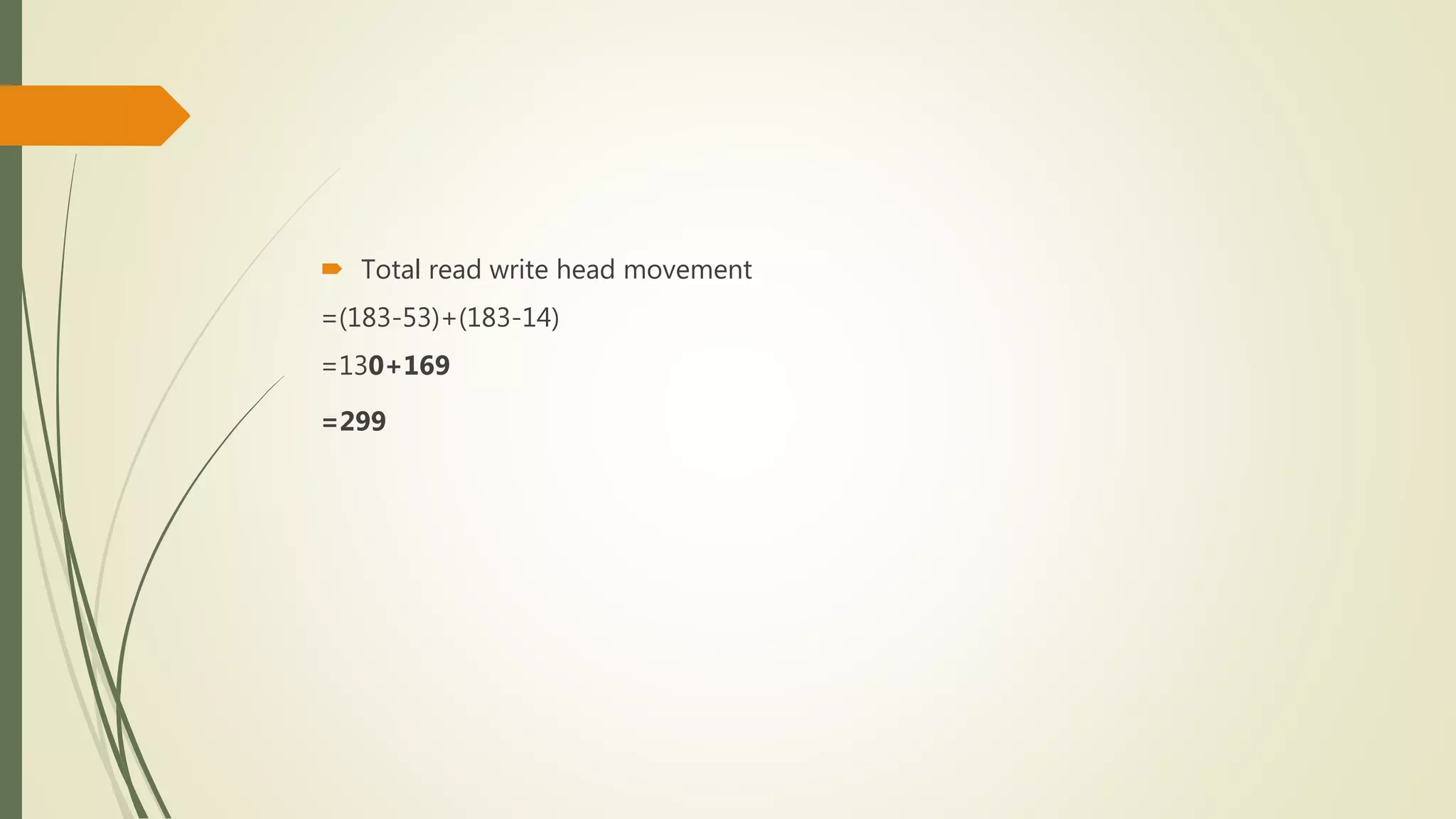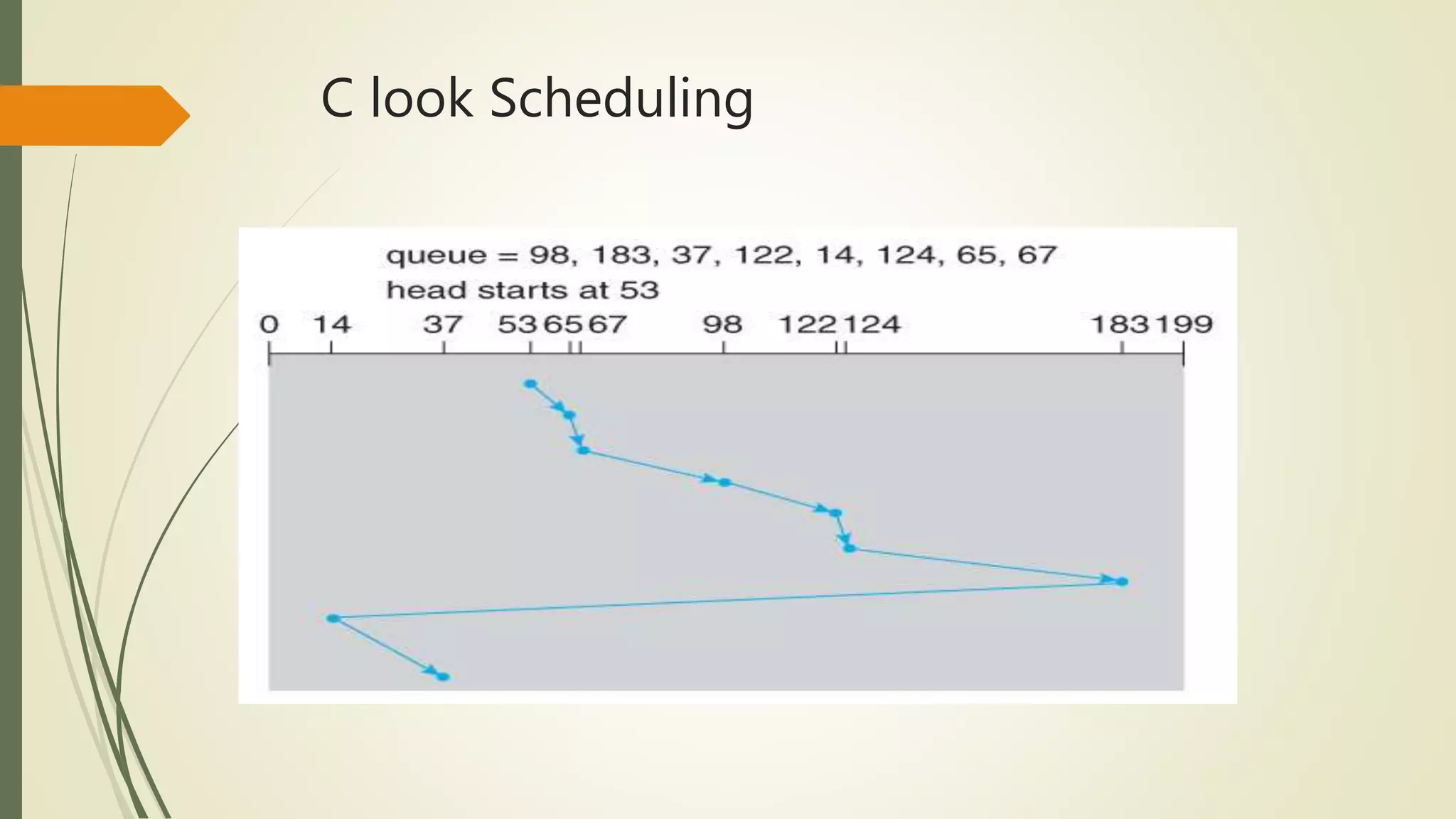The document discusses secondary storage and magnetic disk structure. It provides details on:
- Secondary storage devices like disks, tapes, and drives have non-volatile memory and are slower but cheaper than primary storage like RAM.
- Magnetic disks are divided into platters, tracks, cylinders, and sectors. Read/write heads access data locations specified by head, sector, cylinder addresses.
- Various disk scheduling algorithms like FCFS, SSTF, SCAN, C-SCAN, and LOOK are described which improve disk bandwidth and access time by processing requests in different orders.
